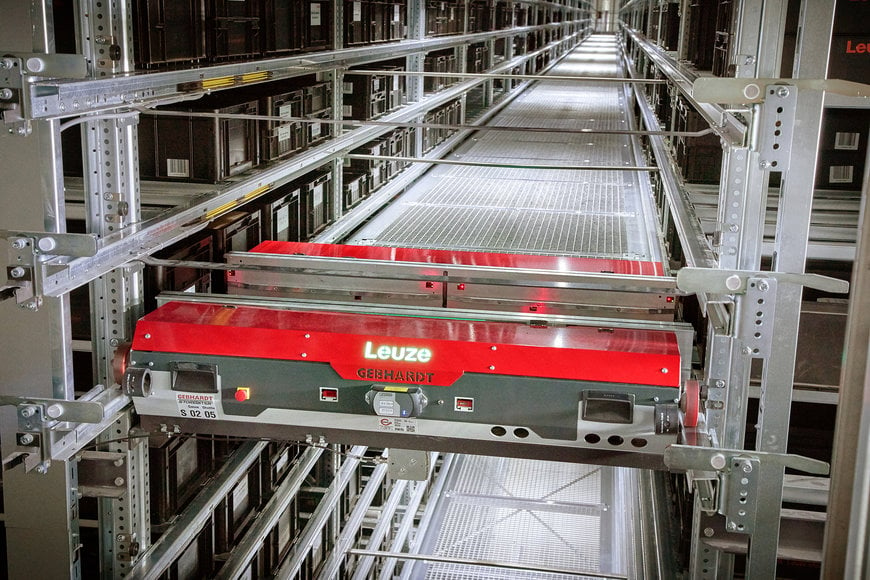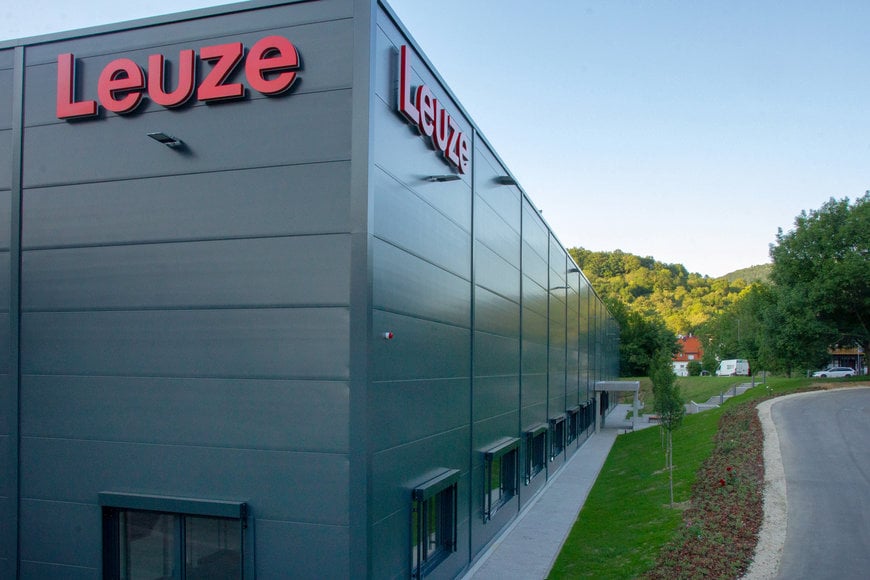www.industryemea.com
25
'21
Written on Modified on
A showroom for Leuze sensors
In 2020, Leuze set a new milestone in its company history: after just 12 months of construction time, the Sensor People put their new international distribution center into operation in Unterlenningen, near the Leuze headquarters.

A clear commitment to the company's roots and the location. At the same time a clear statement regarding growth targets and the company's forward looking approach.
Perfectly dimensioned
The Leuze distribution center has three different storage areas: the floor pallet warehouse, the high bay warehouse and the distribution center's key area: the automatic small-parts warehouse. Together with GEBHARDT Intralogistics Group, Leuze implemented a complete in house conveyor and storage system in its new distribution center.
Requirements
The entire intralogistics process had to be automated and customized to the needs of the company. Most importantly, the complexity of various order picking tasks had to be taken into consideration and a solution found that could cope with workload peaks. Key requirement: It had to be possible to adapt the solution flexibly and scalably to additional growth. Apart from the small-parts warehouse, GEBHARDT also provided the conveyor system with simple, perfectly matched solutions, the multifunctional, ergonomic order picking workstations as well as the warehouse management software GEBHARDT StoreWare®.
Automatic small parts warehouse
The small parts warehouse is located inside a 16 meter high, 66 meter long and 10 meter wide enclosed structure. The containers are carried by the conveyor system through two locks, fitted with high speed doors, into the storage area – and back out again.

The new international Leuze distribution center in Unterlenningen, near the headquarters of the Sensor People.
The small parts warehouse was designed as a 2 aisle shuttle warehouse, with 38 levels and five GEBHARDT StoreBiter® one level shuttles (OLS) in each aisle. "We deliberately chose the one level shuttles with capacitor technology from GEBHARDT. The special feature of this technology is its high degree of flexibility and scalability. Also, it requires far less maintenance than conventional slow action contact systems. They are also more durable which reduces our maintenance processes and increases profitability", says Ibrahim Zuva, Director of Logistics at Leuze, explaining the decision to opt for this shuttle variant. Charging is necessary after 20 minutes of operation and takes place via conductor tracks installed at the front end of the aisle. The charging process itself takes just as few seconds. The shuttle does not need to be fully charged. When working at high capacity, the shuttles continue to operate even with a partial charge. A lifter is provided at the front end of each aisle. This means that the containers in the Leuze warehouse are not transferred at the current level, but instead the shuttles move onto a vertical lift which transports the shuttles together with the containers to the lowest position. There the containers are transferred to the conveyor system. These lifters are also used when items enter storage. The lift can transport a weight of 150 kg including shuttle and travels at four meters per second. To further increase depositing and retrieval capacity, in addition to increasing the number of shuttles it is also possible to integrate a further lift at the end of the aisle. If the current solution achieves 130 double cycles, adding a second lifter will increase performance to 200 double cycles. The warehouse uses two different containers. A large container measuring 600 x 400 x 220 mm and a smaller container measuring 600 x 400 x 125 mm. Based on the large containers, the warehouse achieves a capacity of 33,000 storage spaces. By stacking two small containers on top of each other, the capacity can be increased to up to 40,000 storage spaces.
The path through the warehouse
In the case of items entering the warehouse, Leuze makes a distinction between items from external suppliers, which supplement Leuze's own product range, and items that come from Leuze's own production facility. The external items arrive at the incoming goods department in parcels. There, they are unpacked and their identity and quantity checked. If identity and quantity are correct, the items are packed in one of the two container variants and "married" to the container. In this way, the ERP system knows which items are contained in which container. The process step in which the internal items are assigned to a specific container takes place at the production site. The individual containers are transported to a loading point where they enter the conveyor system. The Leuze sensors and the warehouse management software (LVS) from GEBHARDT do the rest. "Our sensors read the bar codes to determine which container is at which position in the conveyor system, and the LVS deposits the containers chaotically randomly in the small-parts warehouse", explains Zuva. The LVS is familiar with the order pool. In other words, it knows which order must be retrieved for delivery and when. Algorithms stored in the LVS control which container is retrieved first from the small-parts warehouse and fed to one of the three order picking stations. The containers are transported out of the warehouse in the shuttles, and the vertical lift moves them to the lowest level where they are handed over to the conveyor system.
After the container is handed over to the conveyor system, it travels (controlled by Leuze sensors and the GEBHARDT StoreWare® software) to one of the three multifunctional order picking workstations, which are each equipped with a height adjustable pedestal to ensure optimum ergonomics. Multifunctional workstation means that three different order picking functions can be carried out at each workstation. The first function is defined as the basic function and deals with orders that are supplied to European end customers via the usual parcel delivery services. The containers are transported by the conveyor system. When they arrive at the workstation, SAP tells the order picker how many items need to be picked for the order. The order picker places the items in the shipping box. The shipping box is then packed, the delivery slip and service provider label are attached, and the parcel is again transported on the conveyor system to the outgoing goods department. When the parcel arrives at the removal point, the parcel is loaded into a pallet and received by the shipping provider. The second function is responsible for sending deliveries to non European subsidiaries. They receive grouped consignments, i.e., weekly bulk shipments. The third function is the so called consolidation function.
The conveyor system and order picking workstations can be easily retrofitted so large pallet boxes can then be handled and filled. "Our consolidation orders consist of items from the small parts warehouse and other items from the two other storage areas.
To merge the items from the different areas, an additional conveyor belt can be pushed to the order picking workstation," says Ibrahim Zuva summing up the retrofit.

